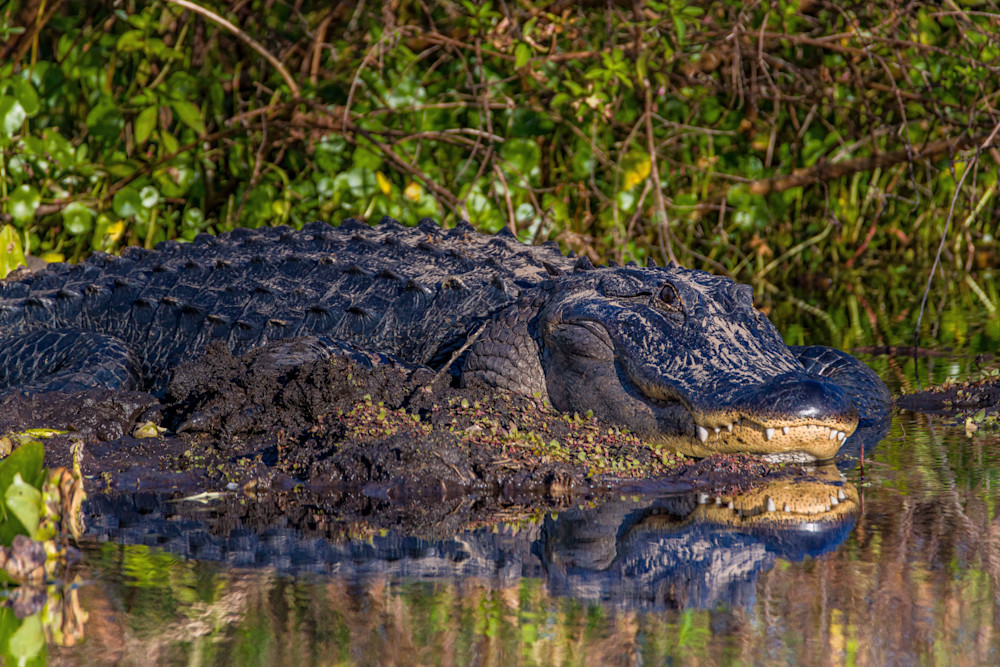In the tranquil setting near Camp Mack, along the banks of Lake Kissimmee in Central Florida, envision an alligator calmly gazing from the water's edge. The scene is serene, with the sun casting a warm glow across the landscape as nature unfolds in its natural rhythm.
The shores of Lake Kissimmee are lined with tall grasses and cypress trees, their reflections mirrored in the still waters. The air is filled with the sounds of wildlife—the distant calls of birds, the gentle rustle of leaves, and the occasional splash of a fish breaking the surface.
Nestled in the shallows, partially submerged, an alligator raises its eyes above the waterline. Its dark, armored body is mostly concealed, creating a stealthy and mysterious presence. The alligator's eyes, keen and watchful, fixate on a point along the banks. The sunlight dances on the water's surface, casting gentle ripples that frame the reptile's form.
The alligator's gaze is patient, almost meditative, as it surveys its surroundings. Its powerful tail lies partially submerged, ready for a quiet glide through the water. The textured scales on its back catch the light, revealing the intricate details of this ancient creature.
Nearby, the Camp Mack area may be a haven for nature enthusiasts and campers, who, with respectful distance, observe the alligator's presence. The encounter is a moment of coexistence, where human appreciation for the wild meets the undisturbed habitat of this remarkable reptile.
As the sun begins its descent, casting hues of orange and pink across the horizon, the alligator's silhouette remains, an embodiment of the untamed beauty of Florida's natural landscapes. The scene captures the essence of the wild, where water meets land, and the residents of Lake Kissimmee, like this alligator, silently hold their ground in the fading light.
















